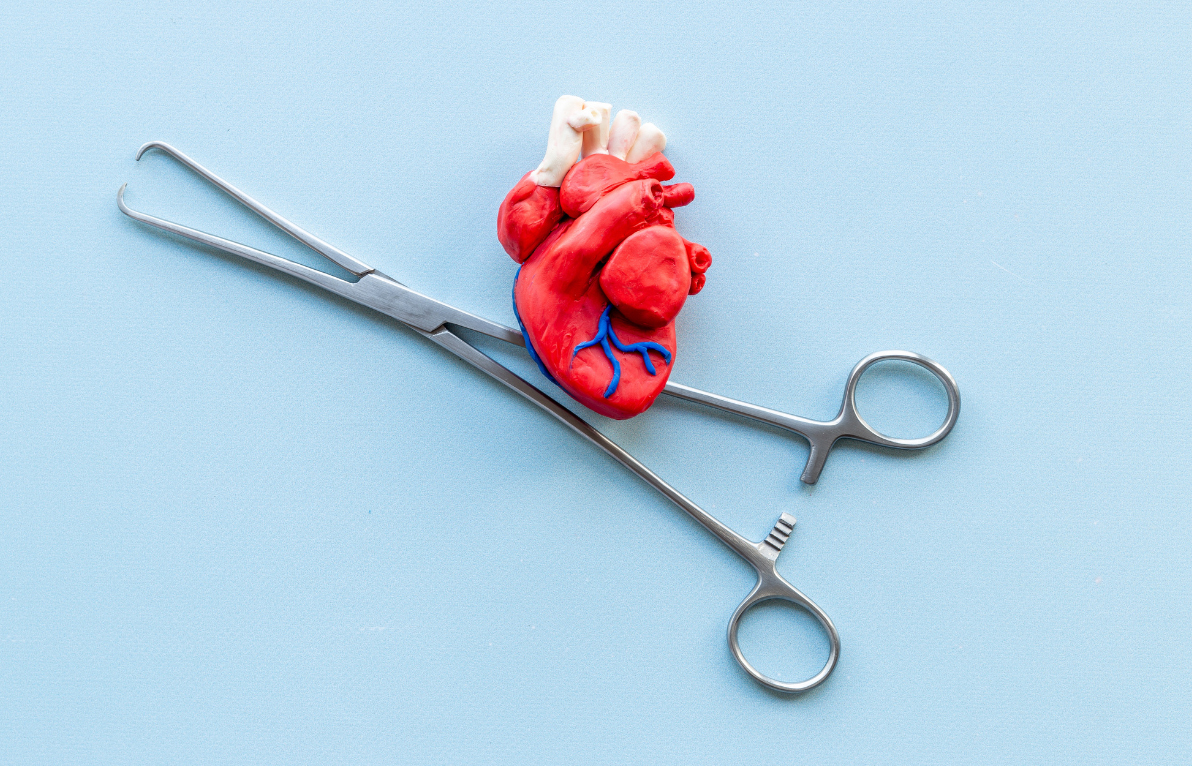Aortic Valve Repair and Replacement Surgery
The aortic valve is one of the four valves separating the lower left heart chamber, left ventricle, and aorta, the body’s main artery. Even as the heart contracts, the Aortic valve opens and allows blood to flow from the left ventricle into the aorta, and when the heart relaxes, it also prevents blood from moving backward. A diseased aortic valve can disrupt the blood flow and mounts pressure on the heart to work harder to pump blood throughout the body.
The diseased or damaged aortic valve can be treated either with Aortic Valve Repair or Aortic Valve Replacement to improve the blood flow, reduce associated symptoms and improve quality of life.
What Are The Symptoms of Aortic Valve Disease?
In patients suffering from aortic valve disease, the valve between the lower left chamber or left ventricle and the main artery, known as the aorta, fails to function correctly. The damaged or diseased aortic valve can restrict the blood flow to the rest of the body and prevent it from flowing in the correct direction from the heart.
Aortic Valve Disease Includes:
Aortic Valve Stenosis:
In this condition, the flaps or cusps of the aortic valve become thick and stiff and get fused. As a result, the opening of the valve becomes narrow, reducing or blocking the blood flow from the heart through the body.
Aortic Valve Regurgitation:
In patients suffering from Aortic Valve Regurgitation, the aortic valve doesn’t close properly, allowing the blood to flow backward into the left lower ventricle.
Congenital Heart Defects:
Some babies are born with an aortic valve without a valve opening or don’t have enough tissue cusps. The congenital heart defect can also be the wrong size or shape of the valve.
What Are The Symptoms of Aortic Valve Disease?
In some patients, aortic valve disease may not present with any observable symptoms for many years. However, if you notice one or more signs, as mentioned below, contact your doctor immediately.
- Murmuring in the heart and irregular heartbeat
- Chest pain coupled with tightness
- Sudden fainting and dizziness
- Severe fatigue, inability to do regular work
- Trouble breathing, especially while exerting pressure or lying down
- Lack of appetite
Why Is Aortic Valve Repair or Replacement Recommended?
Aortic valve repair and replacement are invasive or minimally invasive procedures performed to treat aortic valve disease. Patients suffering from mild aortic valve disease would require regular check-ups. Still, most patients would require surgical intervention to prevent significant complications, including heart failure, heart attack, stroke, or sudden death due to cardiac arrest. Your surgeon would decide on the type of procedure depending on the severity of the aortic valve disease, age of the patient, overall health condition and history, and if the patient could withstand the procedure.
Aortic valve repair and aortic valve replacement are done through open-heart surgery, where a long incision is made in the chest to correct the diseased valve.
The cutting-edge surgical methods in recent years have facilitated minimally invasive procedures where a catheter is inserted in the leg or chest through smaller incisions.
Aortic Valve Repair:
Aortic valve repair through open-heart surgery is known as a sternotomy. This procedure is aimed at correcting different anomalies, including:
Inserting tissue to patch tears and holes in the perforated cusps
Providing support to the base of the valve
Separating fused valves
Reshaping or removing the tissue to allow the valve to close tightly
Tightening the ring around the valve, known as the annulus, by placing an artificial call. This procedure is known as annuloplasty
Open Hear Surgery For Aortic Valve Repair:
Aortic valve repair is done under general anesthesia. The patient’s heart is connected to a cardiopulmonary bypass machine which takes over the heart and lungs’ functioning during the procedure. A long incision is made in the centre of the chest, and the process depends on the type of valve condition, including separating fused valve leaflets, repairing torn leaflets, or reshaping valve parts to ensure better functioning. The surgeon would then check for the functioning of the flaps, and the patient would be weaned off the bypass machine allowing the heart and lungs to function normally.
The patient may have to spend 2 to 3 days in the ICU following and may have to spend up to ten days in the hospital till complete recovery. Regular duties can be resumed within 4 to 8 weeks.
Minimally Invasive Aortic Valve Repair:
A lesser invasive procedure called balloon valvuloplasty, a minimally invasive procedure, is done when the aortic valve fails to open fully due to stenosis. During the process, the surgeon inserts a thin, flexible catheter or a tube into the blood vessel through the groin and navigates it to the heart. The balloon on the tip of the catheter gets inflated, which widens the narrowed valve. This procedure is mainly recommended for babies and children with aortic valve stenosis.
Aortic Valve Replacement:
Aortic valve replacement is done when the aortic valve cannot be repaired. During the procedure, the surgeon removes the aortic valve and replaces it with a valve made from a biological tissue or a mechanical valve.
Aortic valve replacement is done under general anesthesia. The patient’s heart is connected to a heart-lung or cardiopulmonary bypass machine, which takes over the functioning of the heart and lungs during the procedure. A long incision is made in the centre of the chest, exposing the heart. The surgeon then accesses the aortic valve through the incision, removes the diseased heart, and replaces it with an artificial valve.
The surgeon would then check for the functioning of the flaps, and the patient would be weaned off the bypass machine allowing the heart and lungs to function normally.
Aortic valve replacement can also be done through minimally invasive methods. Known as Transcatheter Aortic Valve Replacement (TAVR) or Transcatheter Aortic Valve Implantation (TAVI), the surgeon accesses the aortic valve through small incisions and replaces the diseased or damaged valve with a new artificial valve.
There are many types of mechanical or biological tissue valves, and your surgeon would decide the right one, depending on the patient’s overall health condition and age.
Life After Aortic Valve Repair and Replacement:
The patient may have to spend two to three days in the intensive care unit (ICU) and will be shifted to a regular room for further monitoring. Depending on the recovery, the patient may require 7 to 10 days of hospital stay.
It would take 4 to 8 weeks for a full recovery and start performing regular duties. The patient should refrain from lifting heavy objects, driving, and exerting pressure during this time. One should also refrain from putting on excess weight.
The patient should keep up with the medication schedule and all appointments with the doctors for further evaluation of the progress. If you are a smoker, quit right now. Avoid alcohol and eat healthily. Include healthy lifestyle changes for a better quality of life.




 Heart Institute
Heart Institute Oncology
Oncology Critical Care
Critical Care Institute of Transplant
Institute of Transplant Emergency Medicine
Emergency Medicine  Institute of Gastroenterology
Institute of Gastroenterology Institute of Neurosciences
Institute of Neurosciences Preventive Medicine
Preventive Medicine Institute of Renal sciences
Institute of Renal sciences Institute of Robotic Surgeries
Institute of Robotic Surgeries Institute of Pulmonology
Institute of Pulmonology Institute of Bariatric
Institute of Bariatric Institute of Obstetrics & Gynecology
Institute of Obstetrics & Gynecology Institute of Vascular Surgery
Institute of Vascular Surgery General Surgery
General Surgery  ENT & Head, Neck
ENT & Head, Neck Cosmetology
Cosmetology Dental Clinic
Dental Clinic Anesthesia
Anesthesia Advanced Pediatrics
Advanced Pediatrics Eye/Opthalmology
Eye/Opthalmology




